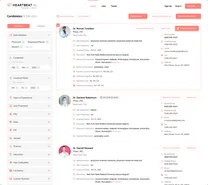In the United States, respiratory therapists play a vital role in treating respiratory illnesses and supporting patients with breathing difficulties. With over 135,800 professionals currently and a promising 14% job growth projected by 2031, the field is thriving.
Are you now worried about hiring the right respiratory therapist as the number grows? Don’t worry, today we’ll discuss where you can hire respiratory therapist.
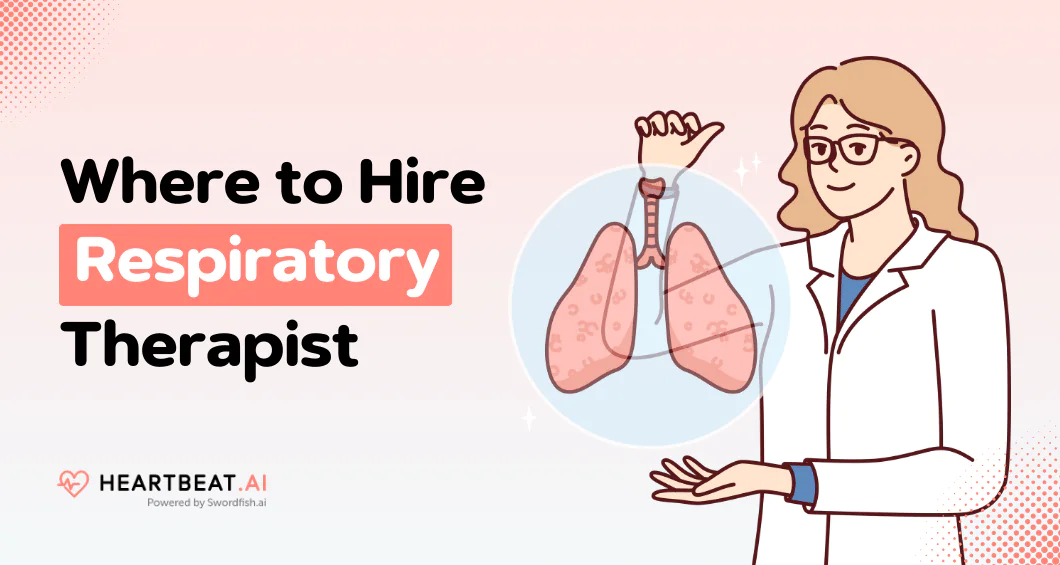
To recruit a respiratory therapist, advertise on healthcare job platforms. You can also get recommendations from any familiar primary care physician, and check your insurance provider’s directory. Besides, Heartbeat provides an accurate respiratory therapist contact list for efficient recruitment.
To learn more about the guide here is a full guide for you including the hiring process, cost, and others. So, keep on reading.
What’s on this page:
Where to Find a Respiratory Therapist?
To look for a skilled respiratory therapist, you can check different places that focus on healthcare workers. Here’s where to look:
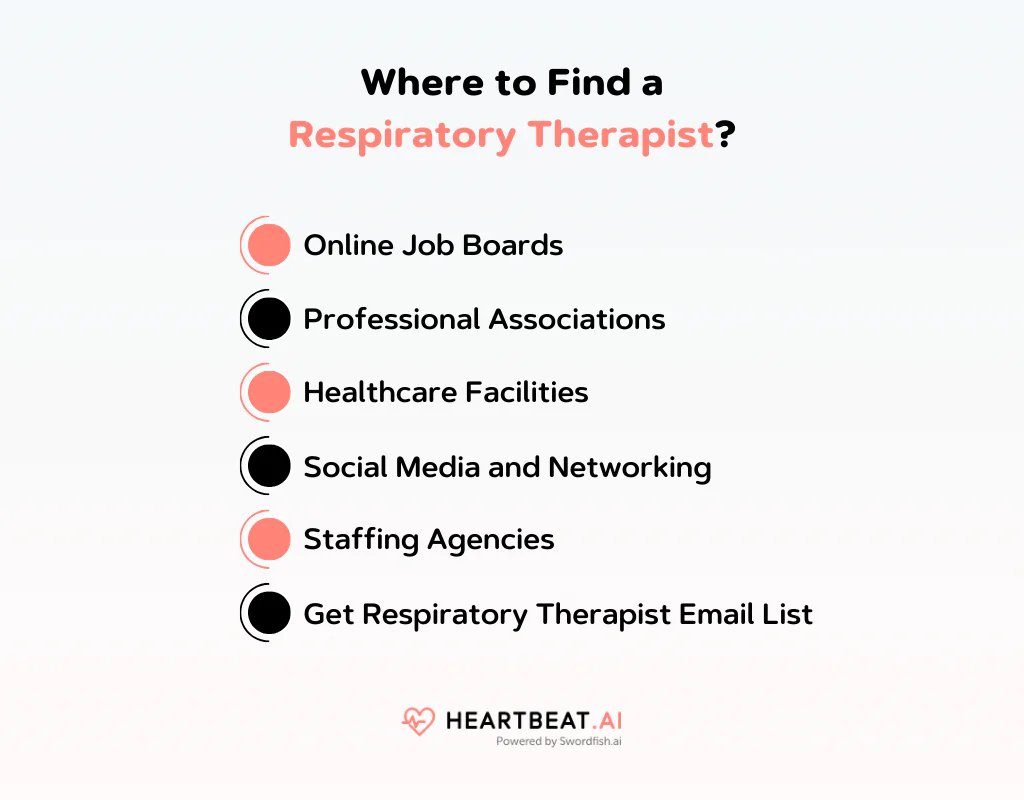
Online Job Boards
Online job boards are a primary resource for healthcare vacancies. Websites like Indeed, Monster, and Glassdoor offer a wide range of listings for respiratory therapists. Employers can post detailed job descriptions, and job seekers can apply directly through the site.
Professional Associations
Associations such as the (AARC) have job boards and networking opportunities. These platforms connect employers with professionals who are specifically looking for roles in respiratory therapy.
Healthcare Facilities
Many hospitals and clinics post job openings on their websites. Checking the careers section of these sites can lead to direct employment opportunities. Networking with staff or attending job fairs hosted by these facilities can also be fruitful.
Social Media and Networking
LinkedIn and other professional networking sites are valuable for finding respiratory therapists. Employers can post jobs, search for candidates based on their skills and experience, and receive recommendations. Networking with professionals in related fields may also lead to referrals.
Staffing Agencies
Staffing agencies specializing in healthcare can help find respiratory therapists. These agencies understand the qualifications and experience required and can match employers with suitable candidates. They can streamline the hiring process and provide temporary staffing solutions as well.
Get Respiratory Therapist Email List
For a quick and smooth connection with professional therapists, the Heartbeat Platform is also available. It offers a simple solution for networking and engaging with these specialists at the end.
Find the Contact List of the Best Respiratory Therapist
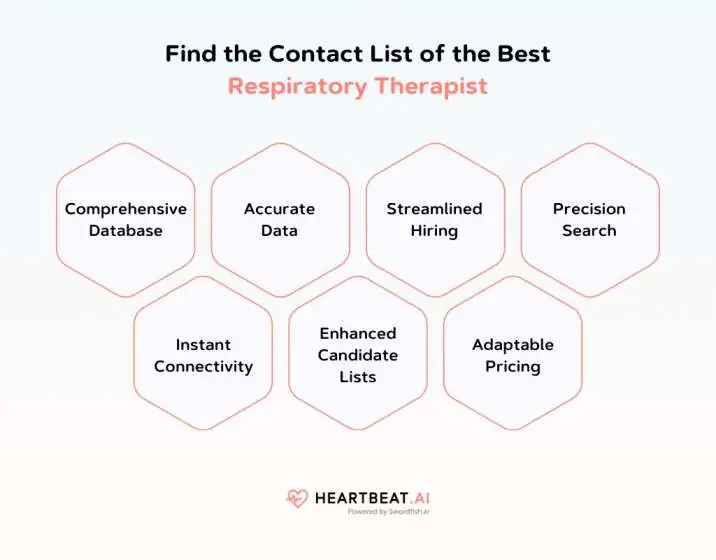
Discover the best respiratory therapists effortlessly with Heartbeat AI. With its extensive database and intelligent search features, discovering the perfect match for your requirements has never been simpler. Explore how it’s designed to meet your specific requirements.
Comprehensive Database
Heartbeat AI offers a huge network of 11 million healthcare professionals, including various respiratory therapists. This extensive collection makes it straightforward to find the ideal professional for any particular requirement.
Accurate Data
Heartbeat promises an impressive accuracy rate of up to 84% for cell phone numbers and 92% for personal emails right from the start. This precision significantly improves the effectiveness of reaching out to respiratory therapists, making your recruitment process more efficient and time-saving.
Streamlined Hiring
Heartbeat’s platform enhances your recruitment strategy by providing immediate access to 8.8 million cell phone numbers and 9.3 million email addresses. This direct access facilitates quick engagement with potential candidates, bypassing the hassle of outdated or inaccurate contact information.
Precision Search
Heartbeat AI’s Prospector Tool sharpens your search using filters for geography, specialty, and years of experience. This enables you to generate a customized list of respiratory therapist contacts that precisely align with your requirements, making your search more efficient.
Instant Connectivity
The Chrome Extension from Heartbeat AI provides on-the-spot access to contact information for respiratory therapists while browsing online registries or healthcare sites. With just one click, you get all the crucial details right in your browser.
Enhanced Candidate Lists
By uploading your list of candidates to Heartbeat AI, the platform identifies and supplements missing contact information. It auto-fills emails and phone numbers, efficiently completing your list of respiratory therapists without the need for manual data entry.
Adaptable Pricing
Heartbeat understands that different groups have different needs and budgets, so it offers various price choices. This approach guarantees cost-effective access to its services, making it easier to find the ideal respiratory therapist without exceeding your budget.
Why Hire a Respiratory Therapist?
Recruiting a respiratory therapist provides significant benefits:
- Expert Respiratory Care: Specialized in managing respiratory diseases, improving patient care.
- Better Patient Outcomes: Quick assessment and treatment can enhance recovery and reduce hospital stays.
- Versatile Patient Care: Equipped to handle diverse patient needs, from newborns to the elderly.
- Ventilator Management: Expert in mechanical ventilator use, essential for critical care.
- Specialized Procedures: Skilled in delivering aerosol medications and conducting lung function tests.
- Cost-Effectiveness: Their role can lower healthcare costs by preventing emergencies and reducing readmissions.
- Patient and Family Education: Offers education on managing respiratory conditions, promoting independence and prevention.
Step-by-Step Guide to Hire Respiratory Therapist
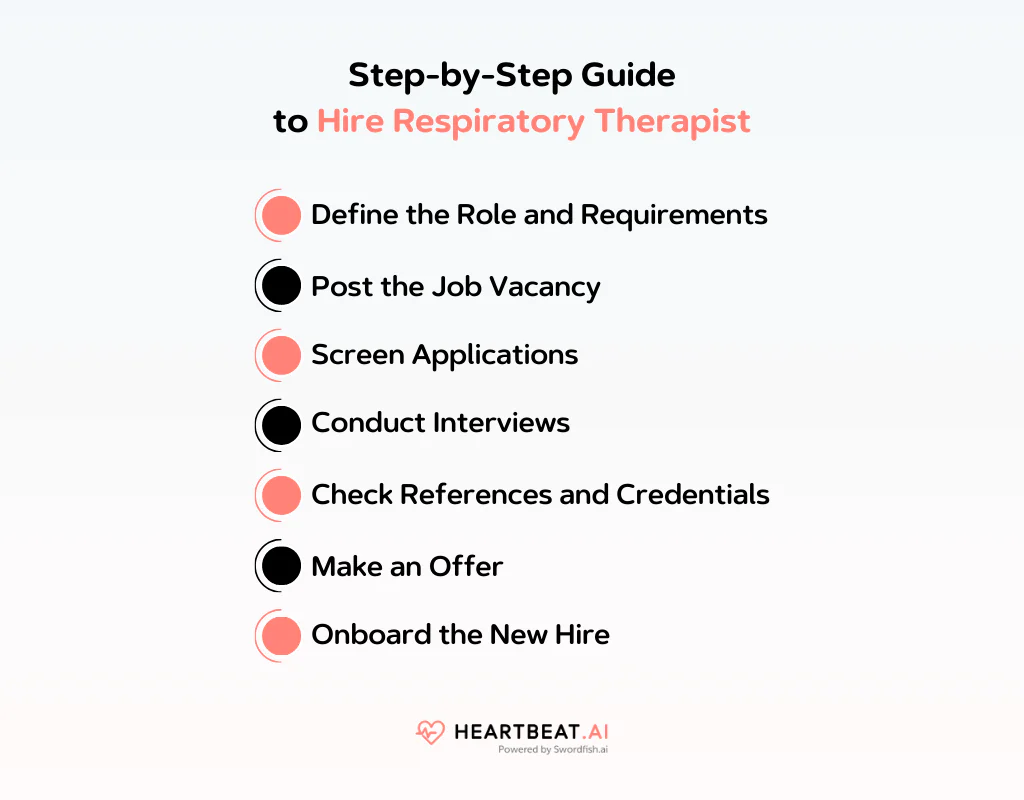
Respiratory therapist recruitment process involves several steps to ensure you find a qualified candidate who fits your healthcare team’s needs. Here is a step-by-step respiratory therapist hiring guidelines:
Step 1: Define the Role and Requirements
Start by detailing the job’s responsibilities, qualifications, and experience level. This clarity helps attract candidates who are a good fit for the specific needs of your healthcare facility.
Step 2: Post the Job Vacancy
Use healthcare job boards and professional networks to advertise the position. A detailed job description and clear application instructions will streamline the recruitment process.
Step 3: Screen Applications
Evaluate resumes and cover letters to identify candidates meeting your criteria. Focus on qualifications like certifications and relevant experience to shortlist potential hires.
Step 4: Conduct Interviews
Interviews allow assessment of candidates’ technical knowledge and interpersonal skills. Incorporating practical assessments can further gauge their suitability for the role.
Step 5: Check References and Credentials
Verifying licensure and certifications ensures candidates’ qualifications are legitimate. Reference checks provide insights into their professional conduct and performance.
Step 6: Make an Offer
After selecting the most suitable candidate, extend a job offer that includes salary, benefits, and other pertinent details. Clear communication at this stage is crucial for a smooth hiring process.
Step 7: Onboard the New Hire
An effective onboarding procedure for a respiratory therapist introduces the new therapist to the facility and team. Providing support and training opportunities is essential for their successful integration and ongoing development.
Similarly, you can read about hiring physical therapist and get a better understanding of it if you’re interested.
Skills to look for in a Qualified Respiratory Therapist
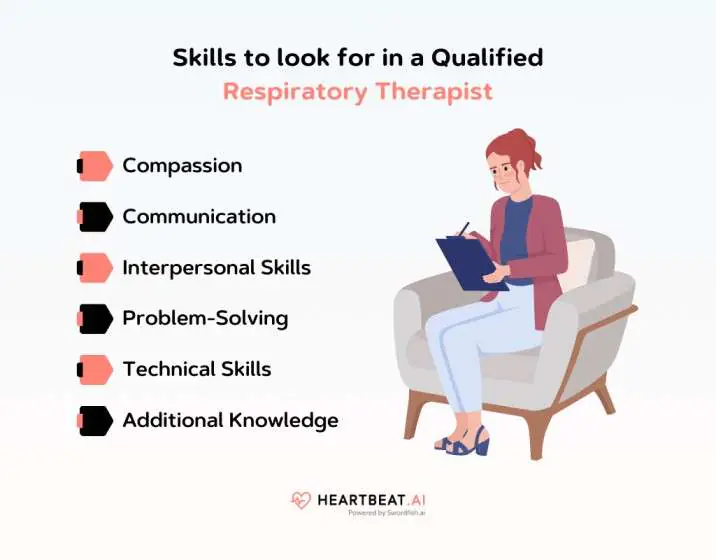
Respiratory therapists (RTs) should have a variety of skills, including:
Compassion
Empathy and emotional support are key for patients. Understanding and caring for them is crucial.
Communication
It’s important to talk clearly and effectively. Good verbal skills help in explaining and discussing patient care.
Interpersonal Skills
Being friendly and working well with others is essential. This includes good bedside manner and the ability to cooperate with team members.
Problem-Solving
The ability to think quickly and critically is necessary for making the right diagnoses. It’s about finding solutions fast and effectively.
Technical Skills
Knowing how to perform specific medical tasks is important. This includes intubation, using respiratory devices, giving oxygen, handling ventilators, and testing lung function.
Additional Knowledge
A strong understanding of the human body, science, and math is needed. Knowing about anatomy, physiology, and other scientific areas helps in patient care.
How Much Does it Cost to Hire a Respiratory Therapist?
Zippia reports that the average hiring cost for a respiratory care practitioner stands at $1,633, with the recruitment process typically spanning 36 to 42 days in the US.
According to US News Best Jobs, the median salary for respiratory therapists in 2022 reached $70,540. The lower 25% of earners received $62,260, whereas the upper 25% enjoyed salaries up to $81,610.
Respiratory Therapist Interview Tips
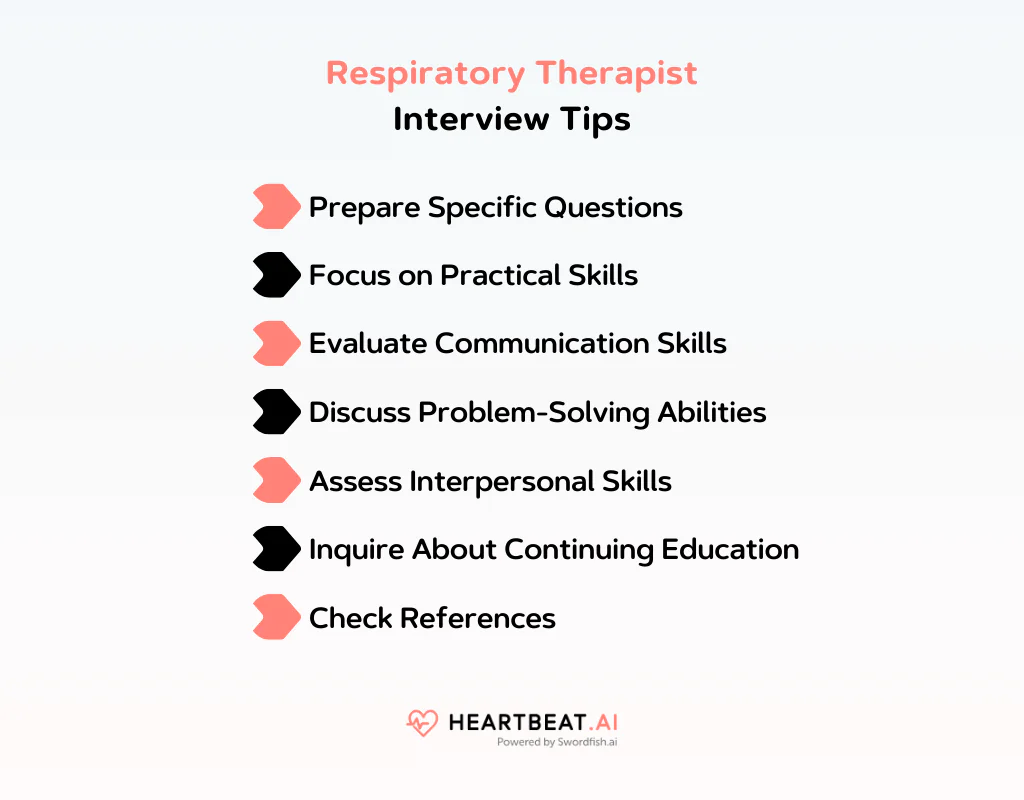
When hiring a respiratory therapist, consider these tips for an effective evaluation:
Prepare Specific Questions
Develop questions that specifically relate to respiratory therapy. This approach helps in assessing the candidate’s technical knowledge and experience.
Focus on Practical Skills
Inquire about hands-on experience with respiratory equipment and patient care scenarios. Understanding their practical skills is crucial for evaluating their competence.
Evaluate Communication Skills
Pay attention to how well the candidate explains complex medical terms. Good communication is essential for patient interaction and team collaboration.
Discuss Problem-Solving Abilities
Ask for examples of how they’ve handled challenging situations. This reveals their critical thinking and adaptability in emergency scenarios.
Assess Interpersonal Skills
Consider their ability to empathize with patients and work within a team. These attributes are crucial in generating a positive experience for patients and promoting teamwork within the workplace.
Inquire About Continuing Education
Find out if they pursue ongoing learning opportunities. A commitment to professional development indicates a dedication to staying current in the field.
Check References
Don’t forget to contact previous employers or colleagues. They can provide insights into the candidate’s work ethic and performance in real-world settings.
Conclusion
That’s everything on how to hire respiratory therapists. In conclusion, hiring a respiratory therapist is key to boosting your team’s capabilities. By carefully preparing and posing insightful questions, you achieve an initial gauge of each candidate’s suitability.
Paying close attention to both what they say and their non-verbal cues further enriches your understanding. The aim transcends merely assessing technical proficiency and experience; it involves discovering professionals whose principles align with those of your practice.
Employing the described strategies will refine your approach to recruiting respiratory therapists, ensuring a smoother and more effective process.
Frequently Asked Question
What qualifications should a respiratory therapist have?
Respiratory therapists typically need an associate degree in respiratory therapy. Many employers also require certification and state licensure.
How can I attract top respiratory therapist talent?
Provide attractive pay, perks, and chances for career growth. Highlighting the positive impact of your practice can also attract candidates.
Can a respiratory therapist work in various healthcare settings?
Yes, respiratory therapists can work in hospitals, clinics, home health care, and specialized respiratory therapy centers.
Who hires a respiratory therapist for a respiratory care unit?
Hospital administrators or the managers of respiratory care units typically hire respiratory therapists.

